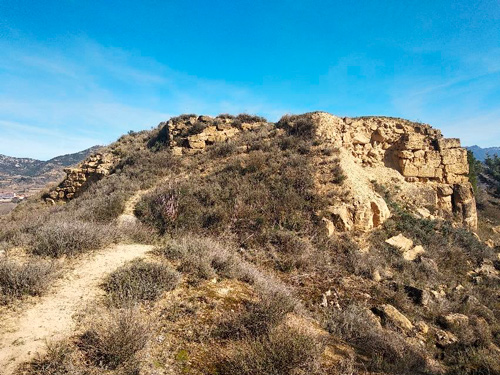Remains of a medieval tower
Remains of a medieval tower
These remains of an old fortified tower are placed on the top of the hill that stands out over the Briñas Bridge, whose origin is possibly late medieval (S. XIII AD) and it is closely linked to the bridge. Its main function would be to monitor the entire surrounding area and the bridge itself, where the guard posts were located.
Its name comes from its last remodeling during the Carlist wars (19th century AD) when its eight-pointed star-shaped plant was remodeled, as reflected in the plans drawn up in 1834.
Finally, after the destruction in 1842 of the castles of La Mota (Haro, La Rioja) and that of Santa Lucía (Ocón, La Rioja) it was occupied by the Haro police force until they left it on an uncertain date.
Reference documents: Sáenz Rodríguez, María. Haro Histórico. El patrimonio artístico de la ciudad de Haro. Universidad de La Rioja. Herrero, Jorge Sáenz. Bienes de Interés Cultural, patrimonio de toda La Rioja. Belezos: Revista de cultura popular y tradiciones de La Rioja, 2015, no 29, p. 78-85.
References: Duque, Angel Montenegro. Colonizaciones y formación de los pueblos prerromanos (1200-218 a.C). Editorial Gredos, 1989. https://santuarioceltibero.jimdofree.com, page of the study carried out by Jesús Ángel García Gamarra.
Note: (out of the route, path with some difficulty)


